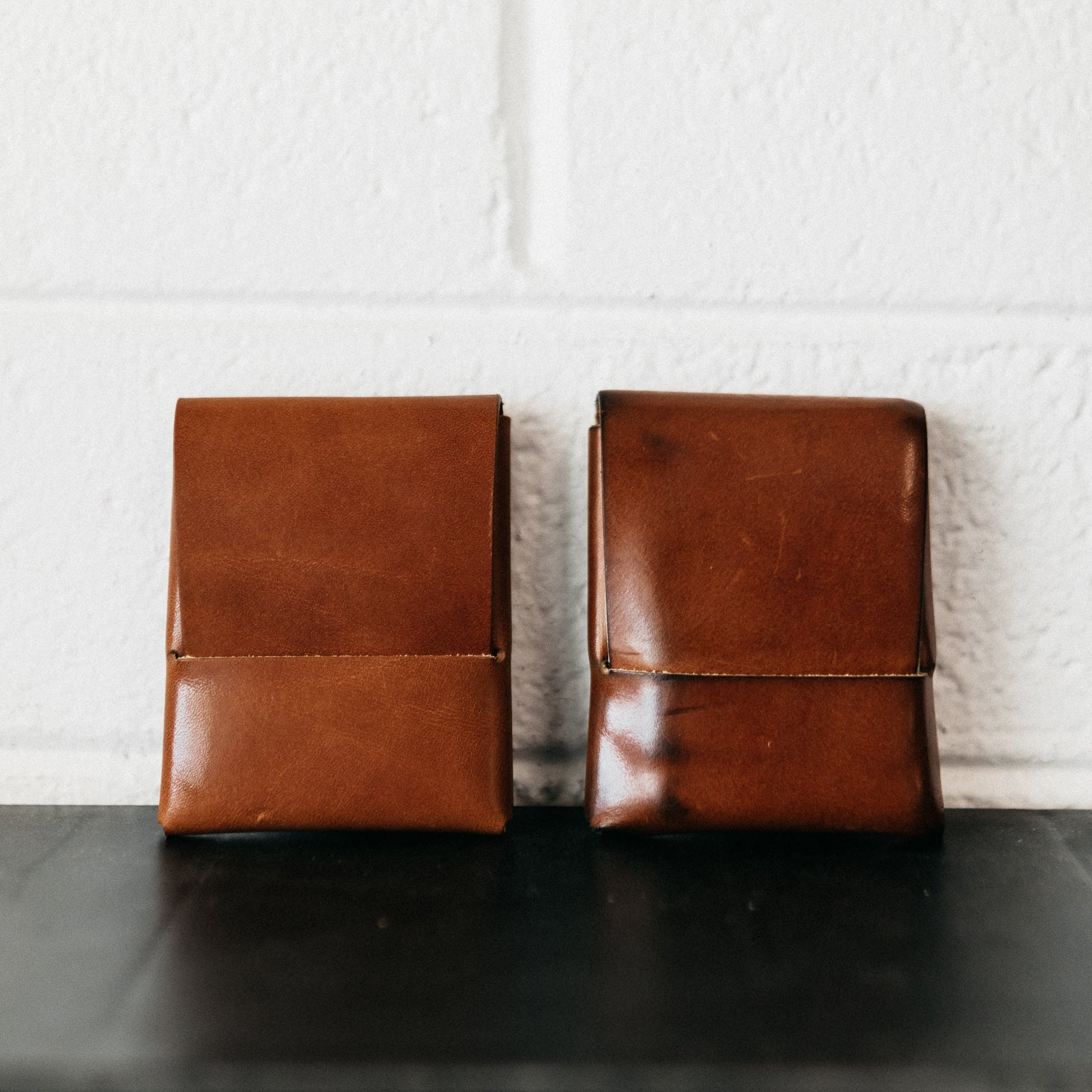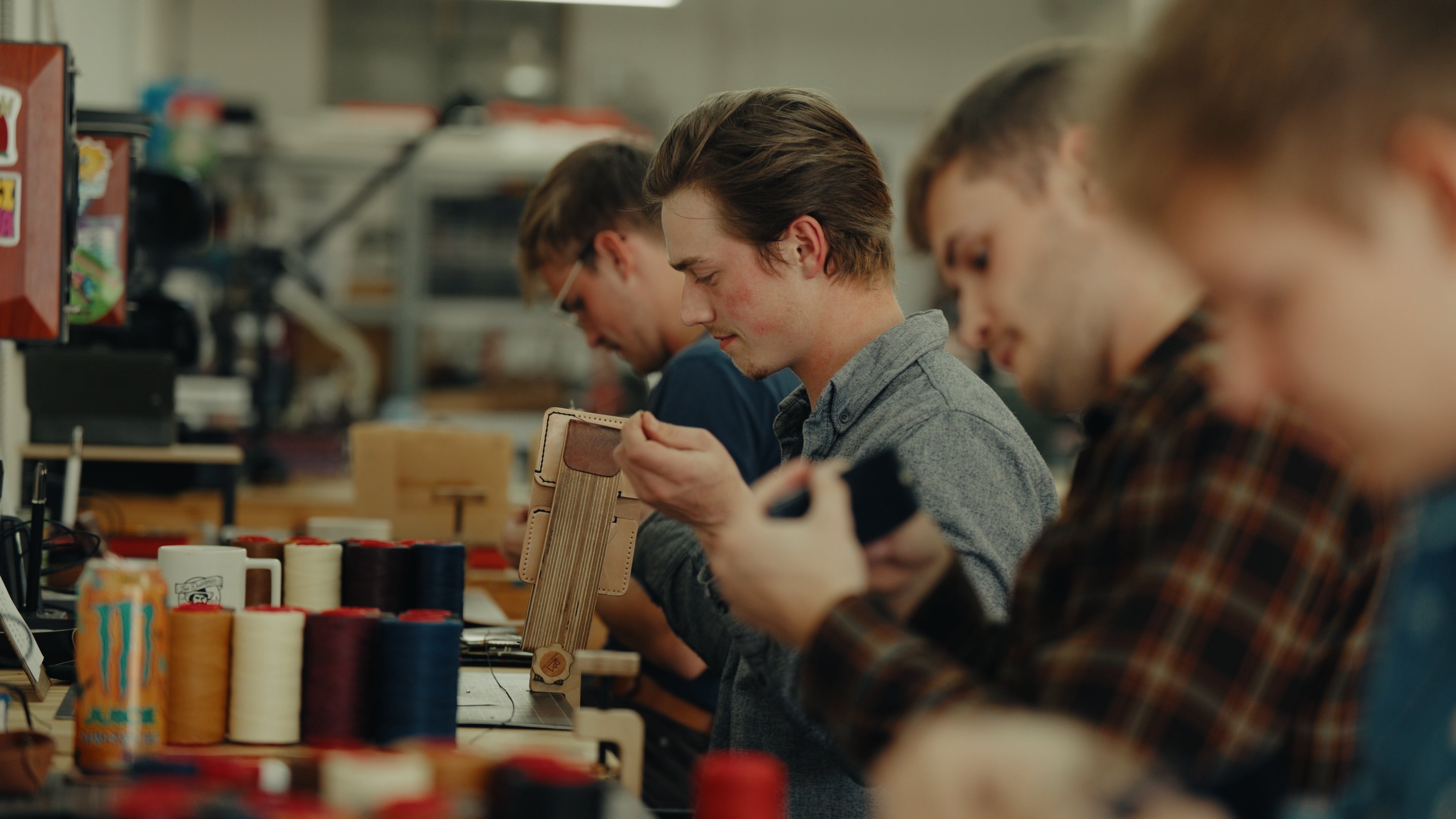
Full-Grain vs Bonded Leather Belts: Key Differences
A belt isn’t just a strip of leather with a buckle. It’s the anchor of an outfit, the quiet piece that holds everything together. When made well, a belt outlasts seasons and styles, developing character with every day of wear. But when made poorly, it cracks, peels, and ends up in the trash after a year or two.
That’s why the debate between full-grain belts and bonded leather belts matters. One is an heirloom in the making; the other is a temporary fix. Understanding the difference saves money, frustration, and waste, and ensures that the belt you buckle each morning can truly be counted on.
What Defines a Quality Belt
Leather is not all created equal. The term “genuine leather” often confuses buyers, as it can refer to everything from top-quality hides to the lowest processed scraps. To know what you’re really strapping around your waist, you have to go deeper than the label.
It starts with how the hide is cut, treated, and finished. That decision determines whether the belt will grow more beautiful with age or fall apart in short order.
Full-Grain Belts: The Gold Standard
Full-grain leather is cut from the outermost layer of the hide, just below the hair. It retains all of the natural grain and fibers, which are tightly packed and incredibly strong. This is the section of the hide that resists stretching, cracking, and tearing.
Unlike lesser grades, full-grain leather is left untouched. It’s not sanded to remove marks or buffed to hide scars. Those subtle imperfections remain, giving each piece a unique character. Instead of flaws, they’re proof of authenticity.
Over time, full-grain belts develop patina, a deepening color and soft sheen that records the life of the wearer. The belt doesn’t simply age; it tells a story. Products like The Belt are designed around this principle, crafted from thick cuts of full-grain hide that only improve with use.
Bonded Leather Belts: The Shortcut
Bonded leather belts take a very different path. They’re not cut from a single piece of hide. Instead, they’re made from scraps of leather that are shredded, mixed with polyurethane or latex, and pressed onto a fiber backing.
The result is a composite material that looks like leather from a distance but lacks the integrity of the real thing. Think of it as the particleboard of leather: functional for a short period, but not meant for decades of service.
To make bonded leather appear more convincing, manufacturers often stamp a grain pattern on the surface. While it may pass at first glance, the pattern is repetitive and flat, missing the depth of natural leather.
Durability and Longevity
The differences become clear once the belt is worn daily.
A full-grain belt is built for decades. With proper care, occasional conditioning and simple cleaning, it stays supple, resists cracking, and molds comfortably to the wearer. Many families have stories of belts handed down from fathers or grandfathers, the leather darkened and softened by decades of wear.
One customer once shared the story of his father’s work belt, worn nearly every day for over twenty years. The color deepened, the edges rounded, and the surface bore marks of use, but it never failed. That’s the promise of full-grain.
A bonded leather belt, by contrast, rarely lasts more than a couple of years. Because it’s made from layers of scraps, it tends to split and peel. The artificial coating cracks, exposing the fibrous interior. Instead of gaining character, it simply falls apart.
Aesthetic Differences
The way a belt looks and feels tells much about the material.
-
Full-grain belts: Visible pores, natural variations, and subtle scars reveal authenticity. The leather feels dense, warm, and substantial, with a rich, organic scent. No two pieces are identical.
-
Bonded leather belts: Uniform and smooth, often overly shiny. The grain is stamped and repetitive, giving it a plastic-like appearance. The feel is thinner, stiffer, sometimes accompanied by a chemical odor.
Analogy: Holding a full-grain belt is like holding a solid oak plank, heavy, natural, and strong. Holding a bonded belt is more like pressed sawdust, convincing on the surface, fragile underneath.
Cost and True Value
At first glance, bonded leather belts seem like a bargain. They cost less, and for someone needing a quick replacement, they’re an easy purchase. But the cycle of replacing them every year or two adds up, in both money and frustration.
A full-grain belt has a higher upfront price, but it pays off over time. Instead of buying five or six bonded belts over a decade, one full-grain belt can last the entire span. This is the essence of the “buy once, cry once” philosophy: invest more at the start, save more in the long run.
Lost Dutchman’s belt collection embodies this principle, each piece crafted to withstand years of wear without compromise.
How to Spot the Difference
If you want to make sure your next belt is worth the investment, here are some easy ways to tell:
-
Examine the Edges: Full-grain belts often have raw or hand-burnished edges showing the natural fibers. Bonded belts usually hide their composition with painted or plastic-sealed edges.
-
Check the Grain: Full-grain shows irregular, natural patterns. Bonded belts have repeating, machine-stamped textures.
-
Feel the Texture: Full-grain feels warm, sturdy, and flexible with a subtle leather aroma. Bonded feels stiffer, thinner, and often has a chemical smell.
The Sustainability Conversation
There’s also an environmental dimension to consider.
-
Full-grain leather is a natural material, often sourced from tanneries that practice vegetable tanning. This method uses natural tannins, creating leather that is both durable and biodegradable. Scraps can be repurposed for smaller goods, like leather coasters.
-
Bonded leather relies heavily on plastics and adhesives. When it breaks down, it doesn’t biodegrade like natural leather. Instead, it adds to landfill waste.
By choosing full-grain, you’re not just buying quality for yourself; you’re also making a more responsible choice.
Making the Right Choice
The decision between full-grain belts and bonded leather belts is ultimately about priorities.
-
If you want a temporary, low-cost option for a costume or short-term use, bonded leather may suffice.
-
If you value durability, authenticity, and a piece that will age with you, full-grain is the clear winner.
At Lost Dutchman Leather, every belt, wallet, and accessory is designed with longevity in mind. Whether it’s The Belt, a timeless wallet like The Dutchman, or functional accessories like the AirTag Keyring, the philosophy is the same: invest in what lasts.
Final Thoughts
A belt should do more than hold up your pants. It should hold up to life.
Full-grain belts bring strength, character, and a legacy that grows with you. Bonded leather belts bring quick convenience but little endurance. When you choose full-grain, you choose craftsmanship, longevity, and the satisfaction of knowing that the piece you wear today will still be with you years from now.
For those ready to invest in something better, explore the belt collection and discover accessories built for decades, not months. For any questions or guidance, get in touch with our team. We’ll help you find the belt that fits your style and your life.


